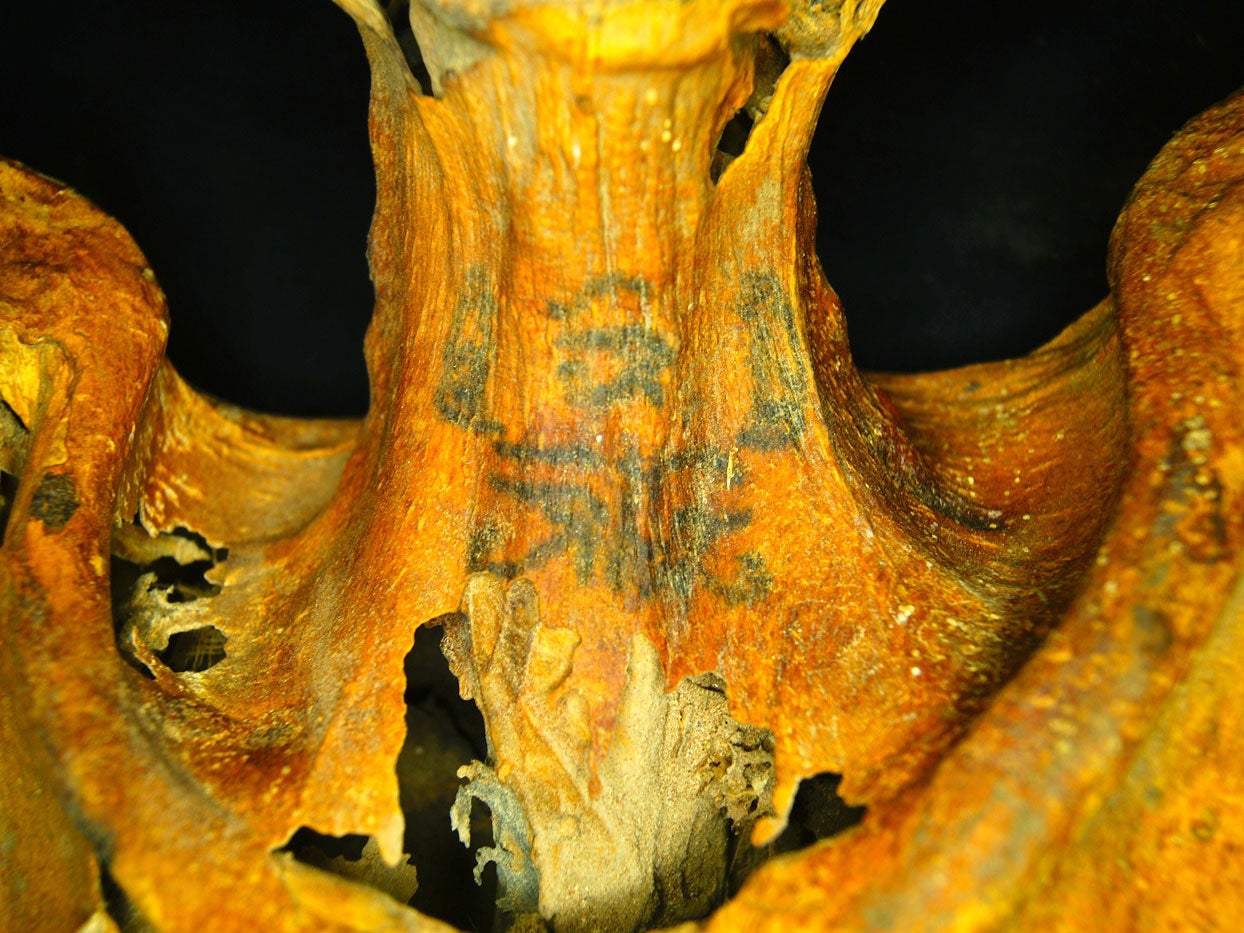The Independent's journalism is supported by our readers. When you purchase through links on our site, we may earn commission.
Ornately-tattooed 3,000-year-old mummy discovered by archaeolgists
The mummy's torse is ordained with ornate pictures of plants and animals

Your support helps us to tell the story
From reproductive rights to climate change to Big Tech, The Independent is on the ground when the story is developing. Whether it's investigating the financials of Elon Musk's pro-Trump PAC or producing our latest documentary, 'The A Word', which shines a light on the American women fighting for reproductive rights, we know how important it is to parse out the facts from the messaging.
At such a critical moment in US history, we need reporters on the ground. Your donation allows us to keep sending journalists to speak to both sides of the story.
The Independent is trusted by Americans across the entire political spectrum. And unlike many other quality news outlets, we choose not to lock Americans out of our reporting and analysis with paywalls. We believe quality journalism should be available to everyone, paid for by those who can afford it.
Your support makes all the difference.Ornate tattoos of animals and plants have been discovered adorning the body of a 3,000-year-old Egyptian mummy, in a first for archaeology.
Bioarchaeologist Anne Austin, from Stanford University, came across the unusual markings while examining the preserved body of a woman found in the ancient village of Deir el-Medina, once home to workers who crafted tombs in the nearby Valley of the Kings.
Although the remains are only comprised of a torso, they bear more than 30 distinctive tattoos, which Austin initially mistook for paint.
Closer inspection revealed the tattoos depicted lotus blossoms, cows, baboons and 'wadjet eyes', ancient symbols of power, which Egyptians believed would protect them from evil.
Stretching across the mummy's hips, arms, back and neck, the tattoos are unlike anything seen before by archaeologists. Tattoos found on Egyptian mummies are typically simple patterns of dots and dashes, but these are the first to be discovered which depict actual objects and creatures.
As Nature reports, Austin used infrared imaging to uncover tattoos which were obscured by the embalming resins used to preserve the mummy. Austin and Cédric Gobell, researchers from the French Institute of Oriental Archaeology who are based at Deir el-Medina, used software to stretch the infrared images, to make up for the mummy's wrinkled skin.
Austin believes the tattoos were meant to show off and enhance the woman's religious power and piety, with some of the tattoos having links to ancient deities.
It's not known who the woman was or what role she may have played in society, but the tattoos suggest she was an important figure. As Austin told Nature, the tattooing process would have been "very time consuming, and in some areas of the body, extremely painful."
Her apparent devotion to tattoos shows "not only her belief in their importance, but others around her as well," Austin said.
The woman is believed to have been mummifed between 1300 and 1070 BC, but her tattoos are not the oldest ever discovered. That honour belongs to Ötzi, the name given to a natural mummy found in Austria's Ötztal alps in 1991.
Ötzi is believed to have died around 3250BC, and had 61 tattoos, which depicted simple patterns.
Join our commenting forum
Join thought-provoking conversations, follow other Independent readers and see their replies
Comments